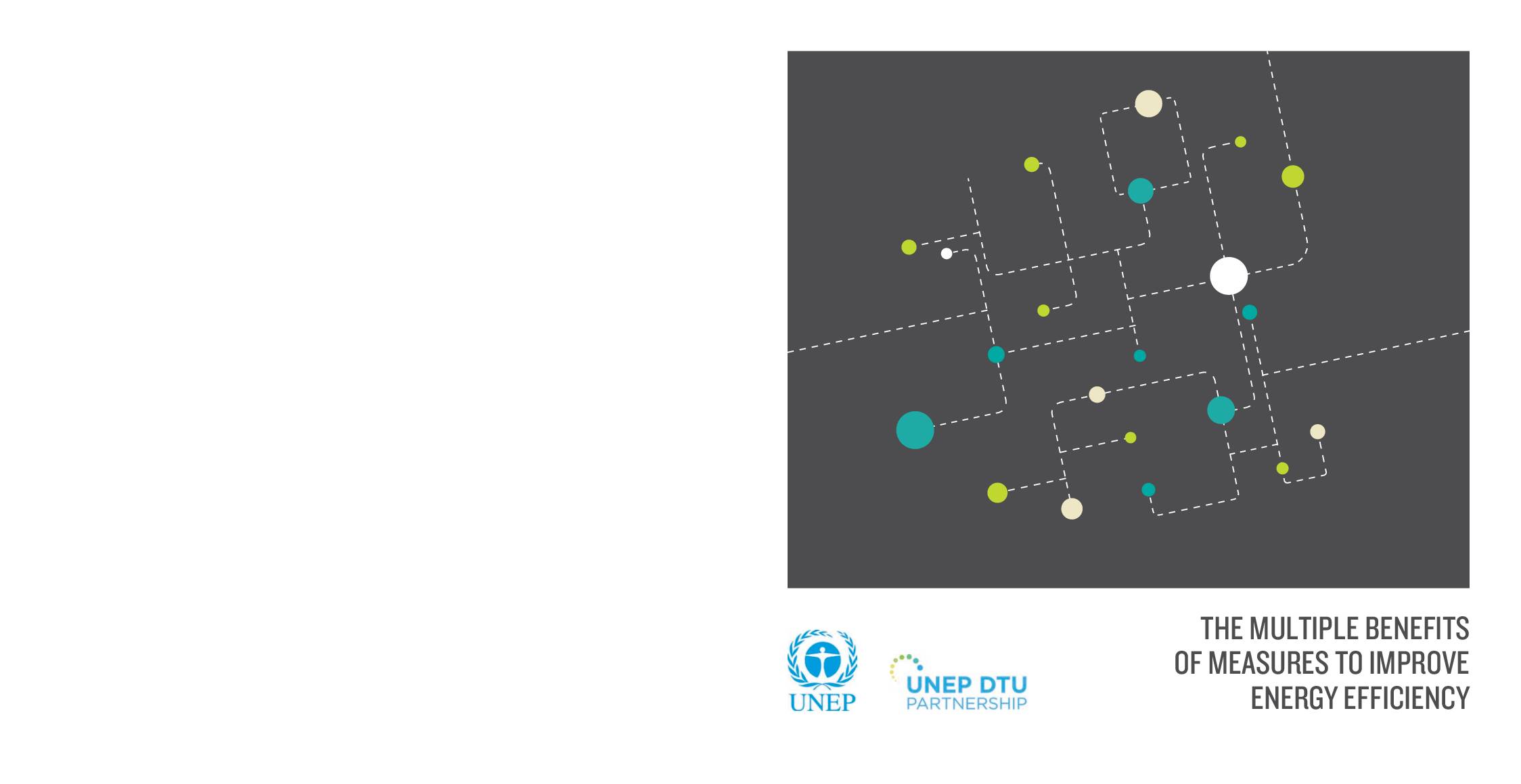The ‘emissions gap’ report series by the United Nations Environment Programme has provided ample insights into both the size of the so called emissions gap and the range of options available to bridge it. In the 2014 issue the focus was on the extent to which improvements in energy efficiency could contribute to meeting global climate change mitigation goals (UNEP, 2014). In addition, the report outlined the many other benefits associated with energy efficiency improvements, from enhanced energy security, to reduced local air pollution, to improved industrial productivity, among others.
Yet, progress in energy efficiency action has been slower than the potential gains may suggest. The different barriers that hinder the adoption of measures to improve energy efficiency are one main reason for this. Against this background, governments around the world have introduced policies and programmes to overcome these barriers, with varying levels of success.
This report used two approaches to estimate the potential impacts and multiple benefits of improving energy efficiency. The first approach applied two energy-economy models to estimate the energy savings and associated greenhouse gas emission reductions that could be achieved by introducing a price on emissions of greenhouse gases. The analysis considered three scenarios that represented different carbon price levels of USD 40, USD 70 and USD 100 per tonne of carbon dioxide equivalent (CO2e). These scenarios were compared against a ‘reference scenario’, projecting existing energy efficiency policies. Global and G20 country estimates were obtained and broken down by major economic sector. On the basis of these estimates, a third model was used to analyse the national-level macro-economic impacts of each scenario. The impacts of supply- and demand-side energy efficiency improvements were analysed for major economic sectors for most G20 countries and for the entire world.
The second approach examined the multiple benefits of energy efficiency through a survey of twenty-five programmes across eight thematic areas (Figure 1). The survey provided qualitative insights into the economic, social and environmental benefits that are attributable to increased energy efficiency, which the macro-economic model cannot capture.
This report is based on analyses solicited from four separate organisations:
Enerdata provided estimates of energy use across several scenarios, using the POLES model;
The Energy Research Centre of the Netherlands (ECN) provided the same type of outputs, using the TIAM model;
Cambridge Econometrics provided estimates of the macro-economic impacts associated with the projections from the POLES and TIAM models; and
DNV-GL researched and compiled 25 case studies describing the multiple benefits of energy efficiency programmes, including macroeconomic impacts, but also focusing on other aspects such as human health and energy access.
These reports, as well as non-technical summaries of each of them, are available at www.unepdtu.org.
Share this

Sectors: Cross cutting, Industry, Renewables
Country / Region: Global
Tags: air pollution, bridges, C2E2, carbon, climate change, climate change mitigation, emissions, energy, energy efficiency, energy security, global climate, impacts on systems and sectors, mitigation goals, pollutionIn 1 user collection: C2E2 Publications
Knowledge Object: Publication / Report
Published by: UNEP DTU Partnership
Publishing year: 2015
Author: C2E2
